The camellia is the queen of winter, unrivalled for glamour, yet she is down to earth, easy to grow and long-lived especially when you treat her just right.
With thousands of camellias to choose from there is one for every spot in your garden – including pots! Here we explain the different types and share some troubleshooting advice.
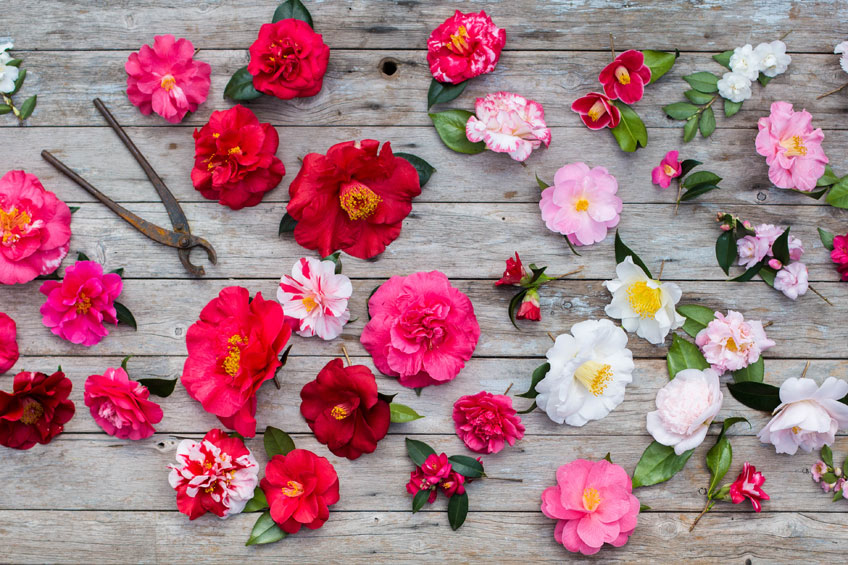
Thousands of camellias to choose from. Photo - Hannah MacCowatt
Camellia sasanqua
The first to flower come autumn, sasanquas are a varied and versatile family of shrubs for full sun. They make excellent clipped topiary, espalier, privacy
hedges, formal hedges and even groundcovers. They are evergreen flowering shrubs from Japan with subtly fragrant autumn flowers that attract the birds.
Shrub heights can vary from 0.5m to 5m so do your research to choose the best variety for your garden. Sasanquas love acidic soil, pH 5-6, so feed
with specialised Camellia fertiliser such as Kahoona after flowering in spring. They are surface-rooting plants so a thick mulch of fallen leaves helps
them thrive. Our favourite sasanquas include ‘Early Pearly’, ‘Jennifer Susan’, ‘Hiryu’ and ‘Pure Silk’.
Camellia japonica
Camellia japonica arrived in the western world from the Orient in 1826 and were received with tremendous enthusiasm. Few plants have been hybridised and
developed to the extent of camellias. Expert say there are more than 30,000 cultivars in existence, and everyone has their favourite. The oldest living
camellia in Australia dates back to 1831. It was part of a consignment of plants which arrived in a case on the ship Sovereign for Elizabeth Macarthur
of Camden Park. One of this collection, ‘Anemoniflora’, is still growing happily in the gardens, and her son William is said to have produced the first
Australian camellia cultivar, the stunning white ‘Aspasia Macarthur’. Camellia japonica grows into a classic small tree that prefers dappled light,
including that found under gum trees. They grow from subtropical Brisbane to the frosty hills of Tasmania and flower from April to October, depending
on the variety. Your local nursery can help select cultivars that will thrive in your garden. If you live in a warm temperate climate avoid the late-season
bloomers as very warm weather in September and October will scorch the petals. Japonicas can be hedged, lolly-popped, trained into a decorative espalier,
bonsaied, potted or even planted in a hanging basket. You can also transplant them easily if they are in the wrong spot - this is best done after a
light prune in winter. First remove all the buds and flowers, then transplant into the new position, taking as big a root ball as possible. Water with
seaweed solution to help the camellia roots settle in.
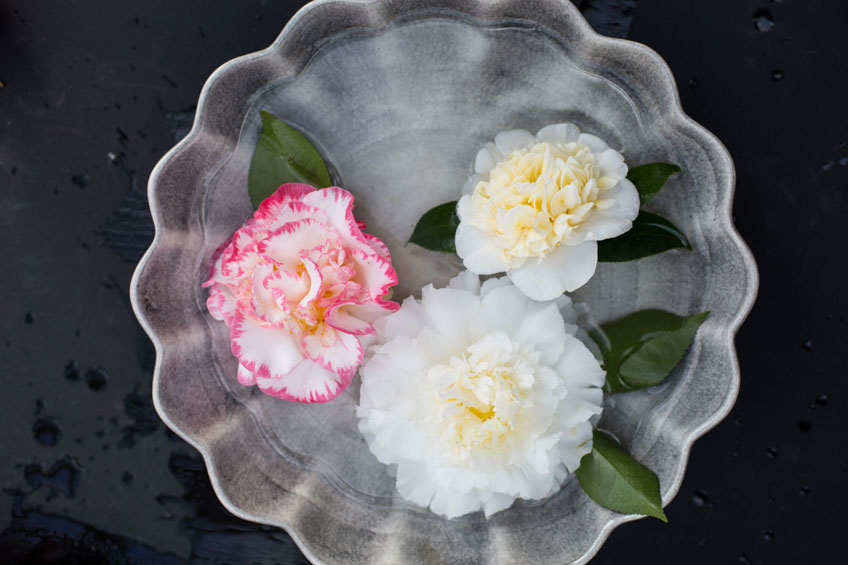
Anenomy varieties. Photo - Hannah MacCowatt
Miniature Fairy-Wand Camellias
Simply adorable and often flouted for their flamboyant cousins, we think miniature flowering camellias should be planted much more often. Masses of dainty
cherry-blossom like flowers ring each weeping branch, sparkling like diamonds on a cold winter’s day. Give yourself a treasure to look forward to every
winter. Perfect for cottage gardens or a woodland setting, their petals will carpet the ground in pastel-toned circles as they fall. Plant one as a
soft informal hedge between neighbours, or to block a driveway, road or an ugly view. Use to enclose your garden even more and to bring the scale down
to make your garden feel more personal. Quite different to their heavier cousins, their shrubby habit is open and arching where each willowy stem filled
with clusters of miniature blossoms, a bit like cherry blossom! Shrubs can reach up to 4 metres high but can be lowered if necessary. We like growing
them with other shade-loving winter favourites: daphne, hellebores, snowdrops, wood violets and plectranthus. There is no need to disbud these camellias
as the more flower buds the better. They like plenty moisture during the growing seasons of spring and summer but hate sodden soil, which can rot their
roots, so they must have good drainage. We like to use a specialised camellia food like Kahoona (from Neutrog) applied in early spring and again in
summer. A water-soluble fertiliser is can also be given every month or couple of months from early spring until early autumn. They do need regular
watering in their early years; once established they become fairly tough. They do like some extra moisture at flowering time. A shallow mulch of compost
or cow manure applied in early spring will protect the roots from summer heat, as well as slowing evaporation of water from the soil and providing
humus and some nutrients.
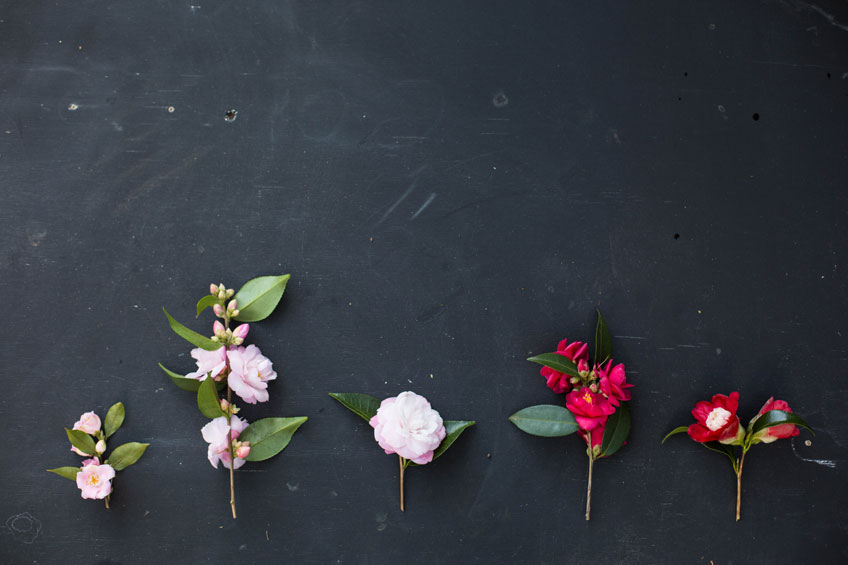
Miniature Fairy-wand varieties. Photo - Hannah MacCowatt
Camellia reticulata
If japonicas are the stately queens of winter then Camellia reticulata are the cheer girls that dance us into spring. They are hard to find, but by no
means shy, with gorgeous flowers – the size of dinner plates - like big ruffled flamenco skirts. C. reticulata hybrids are some of the loveliest and
largest flowers in the horticultural world. Flowers are massive: some are literally as large as dinner plates, up to 25cm across. Flowers have a ruffle
of petals, and come in rich reds, deep pinks and crimsons. These beauties flower later and longer than other camellias, blooming between early May
and late September. Most varieties bloom for two months. The large flowers become even larger as the tree matures, and blooms keep on expanding after
they are picked. Reticulatas do require a little more care in planting and placement than their smaller cousins. They prefer more sun than japonicas,
though most don’t like morning sun. They require protection from strong winds and rich, well-drained soil with plenty of humus. They are better in
subtropical zones, where other camellias often languish, than in cooler regions. They grow into more open trees, about 3-5m tall, and need more space
around them as they spread. Foliage is deeply veined and leathery rather than glossy. They tend to drop quite a lot of leaves just before the new spring
growth spurt. The new growth needs to be protected against leaf-chewing insects, which can spoil the display. Unlike sasanqua and japonica, theses
camellias do not respond well to excessive pruning. Reticulata are usually grafted onto sasanqua rootstock to create hardier, more adaptable to differing
soil types, and we think it is wise to pay extra for a grafted specimen. Garden uses of the glorious reticulata include as feature trees, woodland
plants and privacy hedges.
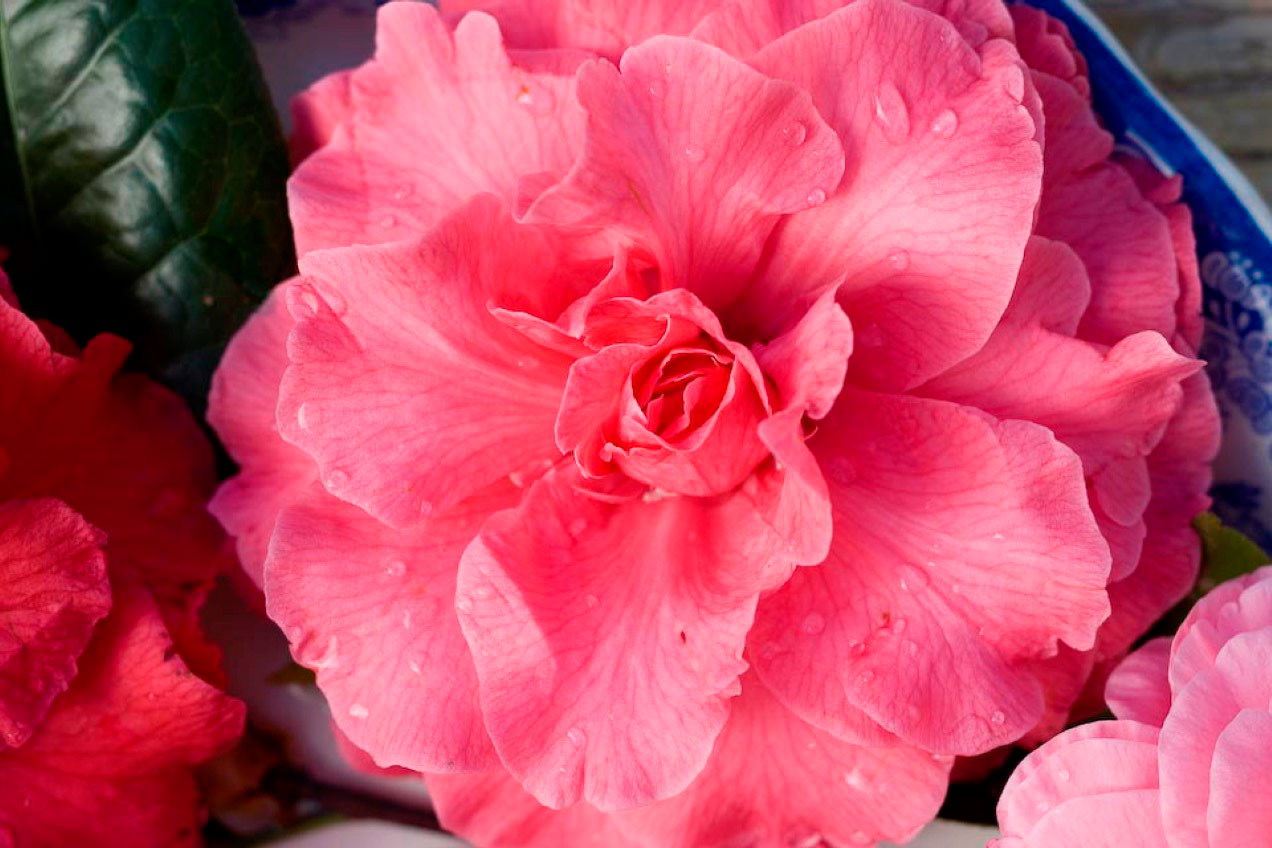
C.reticulata 'Elsie's Girl'. Photo - Photo - Craig Wall
Camellia Growing Tips
Two-spotted mites (ribbed tea mite): this pest is common in dry, warm gardens, especially those that are drought-affected. They produce grey streaks that
look like a scorch mark along the mid-rib of leaves between November and March. Control is necessary to prevent the disfiguring of the leaves. Water
foliage to keep leaves moist, and spray with Eco Oil during summer, or with Natrasoap early in summer. Aphids are sucking insects which are most damaging
during spring when they cause new growth to become twisted and reduced in size. They need to be removed as they can lead to sooty black mould. Control
with pyrethrum sprays. Spraying with EcoOil will also deter aphids if used regularly. Scale: gardeners are increasingly finding several types of scale
insects on camellias and these should be controlled to avoid yellowing leaves, damage to leaf surfaces, disfigured foliage and the appearance of sooty
mould. Control with Eco Oil and Eco Neem. Protect the shallow root zone with a thick mulch of organic matter such as milled cow manure and fallen leaves.
Encourage bigger flowers by liquid feeding in autumn
Never let camellias dry out, especially during summer - a drip irrigation system will keep them happy.
Prevent root rot fungus by spraying once a year with Antirot.
Dis-bud (japonica and reticulata) in early in autumn by removing the third and fourth smaller flower buds in each cluster.
Dropping camellia flowers: The problem of camellia buds that fail to open or drop off prematurely is called ‘flower balling’. Some varieties have a tendency
to ball and there’s nothing that can be done. It might also be that the plant is receiving too much sun. You may need to move the shrub into a more
suitable position. Camellias can develop an excessive amount of buds on each stem so that none of the flowers can open completely. You can thin out
the buds, just leaving one to each stem if you like, which will allow the flowers to show off to advantage.
Thickened and deformed camellia leaves is leaf gall, called Exobasidium camelliae, a fungal disease that effects the new growth of some camellia sasanqua.
The fungus causes the cells to grow too large and the leaf becomes thick and larger than it normal. Sometimes the leaves are a reddish colour and quite
ugly. There is no control, just prune off leaves and bin them.
Floral display
The incredible but top heavy camellia blooms are best displayed in float bowls, plates or platters as flowers picked on long stems fall off quickly.
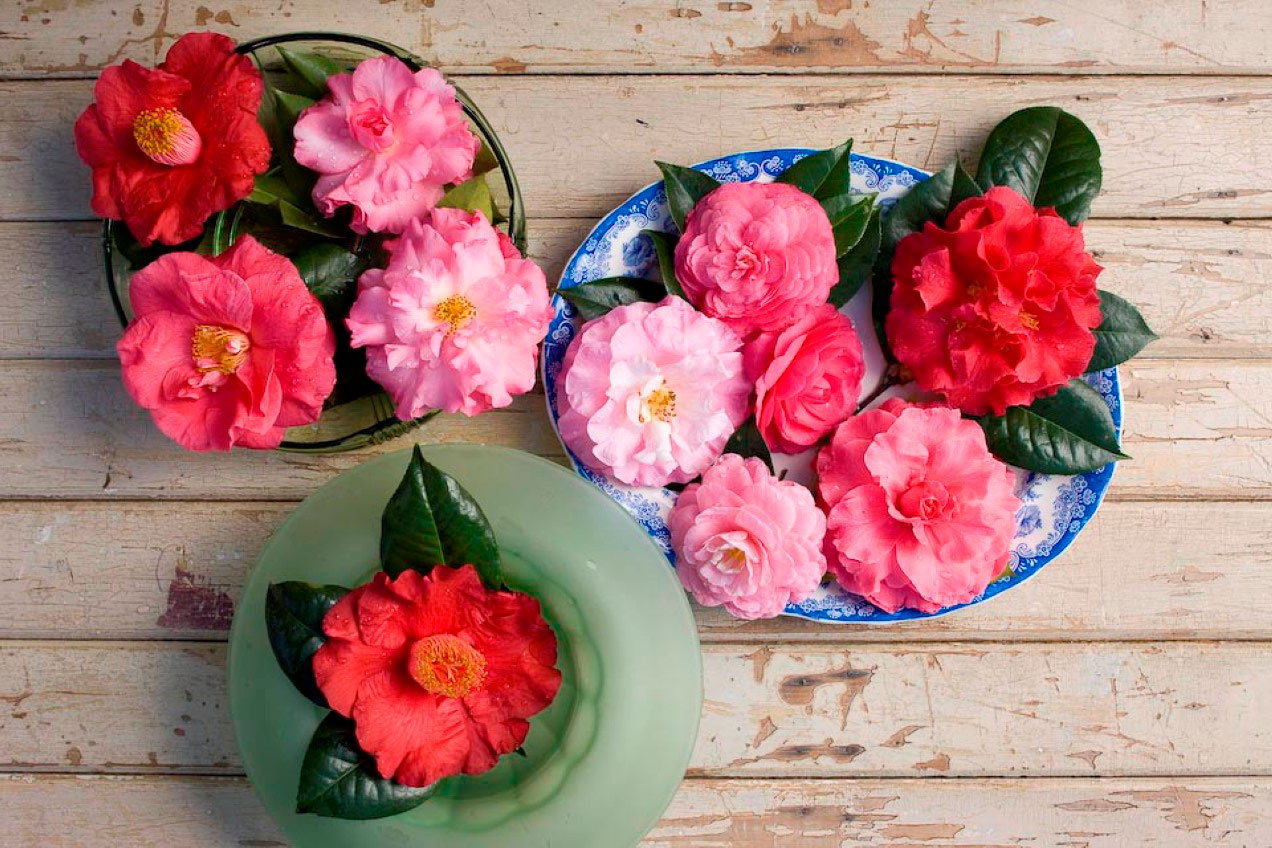
Flowers display beautifully in float-bowls. Photo - Craig Wall